Recent Posts
Salvaging vs. Replacing: What to Consider After Water Damage
3/12/2025 (Permalink)
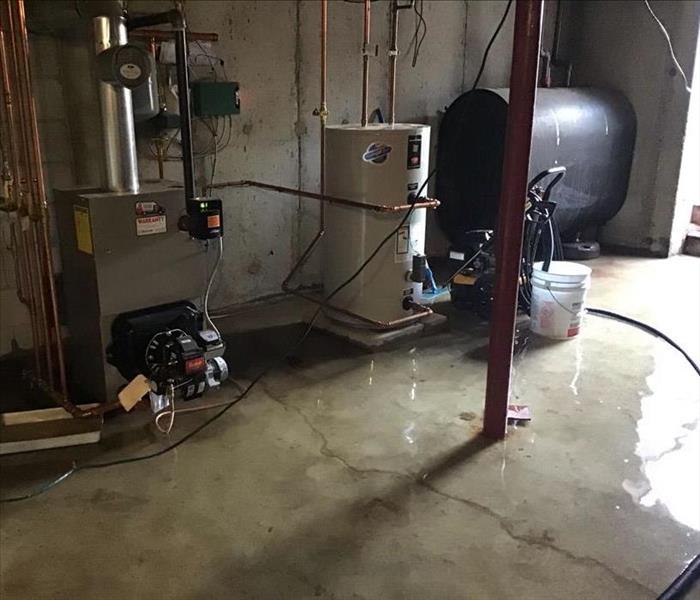 Water damage can be overwhelming, leaving homeowners and business owners with tough decisions about what can be salvaged and what must be replaced.
Water damage can be overwhelming, leaving homeowners and business owners with tough decisions about what can be salvaged and what must be replaced.
Water damage can be overwhelming in Dover, NH, leaving homeowners and business owners with tough decisions about what can be salvaged and what must be replaced. Whether caused by flooding, a burst pipe, or an appliance malfunction, water can seep into floors, walls, and furniture, impacting the integrity of materials.
At SERVPRO®, we specialize in water damage restoration and understand that quick action is key to minimizing damage. This guide will help you determine what items and materials can be restored and what will likely need replacement.
Factors to Consider: Salvage or Replace?
Not all water-damaged materials and belongings are beyond repair, but several factors determine whether salvaging is an option or if replacement is the safer choice.
Key considerations include:
- Water Type: Clean water (from a burst pipe) is less damaging than contaminated floodwater.
- Time of Exposure: The longer materials sit in water, the harder they are to restore.
- Material Type: Porous materials absorb more water and are often harder to save.
- Structural Integrity: Weakened materials may not be salvageable, even if they appear intact.
The following breakdown will help you understand what can typically be restored and what should be replaced after water damage.
What Can Be Salvaged After Water Damage?
Certain materials and belongings can often be saved with professional drying, cleaning, and restoration techniques.
1. Hardwood Flooring
If water is removed quickly, hardwood floors can often be dried and refinished instead of replaced. Dehumidifiers, air movers, and specialized drying techniques can restore the flooring’s integrity.
2. Solid Wood Furniture
Unlike upholstered furniture, solid wood pieces can often be dried and refinished. If the furniture has minor swelling or discoloration, restoration is usually possible.
3. Some Drywall & Trim
If drywall absorbed only minimal water and dried quickly, it may be salvageable. Baseboards and trim can often be removed, dried, and reinstalled. However, if drywall is warped or severely waterlogged, replacement is necessary.
4. Area Rugs
Depending on the type of water involved, many area rugs can be professionally cleaned and dried. High-value or sentimental rugs may be worth professional restoration.
5. Concrete & Tile Flooring
Water exposure usually does not compromise the integrity of concrete or tile, making these materials salvageable in most cases. Cleaning and drying should be done immediately to prevent issues with grout or adhesives.
6. Electronics (Case by Case Basis)
If electronics were not fully submerged, they may be restorable. Professional drying and evaluation are necessary before attempting to power them on.
What Needs to Be Replaced After Water Damage?
Some materials cannot be restored effectively, especially if they absorbed significant water or were exposed for too long.
1. Carpet & Padding
Most wall-to-wall carpeting and padding need to be replaced after water damage, especially if the water source is not clean. Even with professional drying, padding retains moisture and can lead to structural issues.
2. Upholstered Furniture & Mattresses
Couches, chairs, and mattresses absorb water deeply, making thorough drying and cleaning nearly impossible. Foam and fabric can break down, leading to long-term structural damage.
3. Severely Water-Damaged Drywall
If drywall becomes soft, warps, or crumbles, it must be removed and replaced. Attempting to salvage compromised drywall may result in weakened walls.
4. Insulation
Most insulation types lose their effectiveness once soaked. Fiberglass, cellulose, and foam insulation should be replaced if exposed to water.
5. Laminated Flooring
Unlike hardwood, laminate flooring absorbs water quickly and often warps beyond repair. Once water gets underneath, replacement is the best option.
6. Paper & Cardboard Items
Documents, books, and cardboard boxes soak up water rapidly and often become too fragile to save. Some important documents may be salvageable with professional drying and freeze-drying techniques.
FAQs About Salvaging vs. Replacing After Water Damage
How do I know if my flooring needs to be replaced?
If your flooring is buckling, warping, or separating at the seams, it likely needs replacement. Tile and hardwood can often be salvaged, but laminate and carpet usually require removal.
Can I save my drywall if it gets wet?
If the drywall was only briefly exposed to water and dried quickly, it may be salvageable. However, if it softens, warps, or crumbles, it should be replaced.
What should I do with water-damaged furniture?
- Solid wood furniture can often be refinished.
- Upholstered furniture absorbs water deeply and usually needs replacement.
- Metal and plastic furniture can often be cleaned and saved.
Are water-damaged appliances safe to use?
It depends on the extent of water exposure. Appliances and electronics should be evaluated by a professional before being plugged in.
Can SERVPRO help determine what can be saved?
Yes! SERVPRO's water damage restoration professionals assess materials and belongings to determine what can be salvaged and what should be replaced.
SERVPRO: Helping You Recover After Water Damage
Deciding between salvaging and replacing after water damage can be overwhelming. At SERVPRO, we provide expert assessments, professional drying techniques, and restoration services to help you recover quickly and efficiently.
For fast and reliable water damage restoration, contact SERVPRO today—we’re here 24/7 to assist with all your restoration needs!
The benefits of 24-hour emergency service for fire damage restoration
11/26/2024 (Permalink)
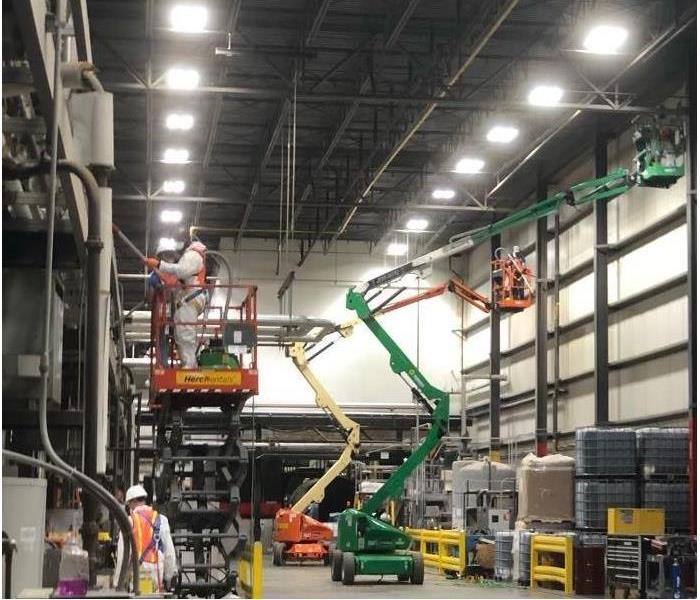 At SERVPRO of The Seacoast, we’re committed to providing 24/7 fire damage restoration to help you recover as quickly as possible.
At SERVPRO of The Seacoast, we’re committed to providing 24/7 fire damage restoration to help you recover as quickly as possible.
When fire strikes, the aftermath can be devastating, leaving property owners overwhelmed and unsure of where to start. In these critical moments, having access to a 24-hour emergency fire damage restoration service can make all the difference. SERVPRO® of The Seacoast is proud to offer around-the-clock support, ensuring that no matter when disaster occurs, you have a team of professionals ready to help.
Immediate Response Prevents Further Damage
A quick response is essential after a fire. The longer soot and ash sit on surfaces, the more damage they cause, and water used to extinguish the fire can further complicate matters by seeping into walls, floors, and furniture. SERVPRO’s 24-hour emergency service ensures that cleanup begins immediately, minimizing long-term damage to your property. According to the Institute of Inspection, Cleaning and Restoration Certification (IICRC), fire-damaged materials can start deteriorating within hours, highlighting the importance of swift action. This immediate response helps reduce restoration costs and prevents further damage to your home or business.
Professional Expertise at Your Fingertips
Fire damage restoration is complex, requiring expertise in both cleaning and repairing damaged materials. SERVPRO of The Seacoast's 24-hour emergency service provides access to a skilled team trained in fire damage restoration. From salvaging belongings to reconstructing damaged areas, our team is equipped with the knowledge and tools necessary to restore your property efficiently. We understand the emotional toll fire damage can have, and our professionals approach each job with the care and urgency it requires.
Preventing Secondary Damage with Prompt Action
After a fire, it’s not just the visible damage you need to worry about—secondary damage like mold growth or structural weakening can occur if restoration is delayed. SERVPRO’s prompt response prevents these issues from taking hold. For instance, water left behind from fire hoses can lead to mold growth within 24-48 hours. By beginning the drying process immediately, our team reduces the risk of mold and additional property damage.
Why 24-Hour Service Matters
Here are some key benefits of 24-hour emergency service for fire damage restoration:
- Quick response time to minimize damage
- Mitigation of secondary issues such as water or mold damage
- Expert handling of all aspects of restoration
- Support when you need it most, no matter the time of day
In fact, a survey by the National Fire Protection Association (NFPA) found that U.S. fire departments respond to an average of 353,100 home structure fires per year, further emphasizing the importance of having immediate access to restoration services.
At SERVPRO of The Seacoast, we’re committed to providing 24/7 fire damage restoration to help you recover as quickly as possible. When every second counts, trust the professionals with experience, expertise, and dedication to restoring your property.
Mold Testing: When and How to Do It Right
11/13/2024 (Permalink)
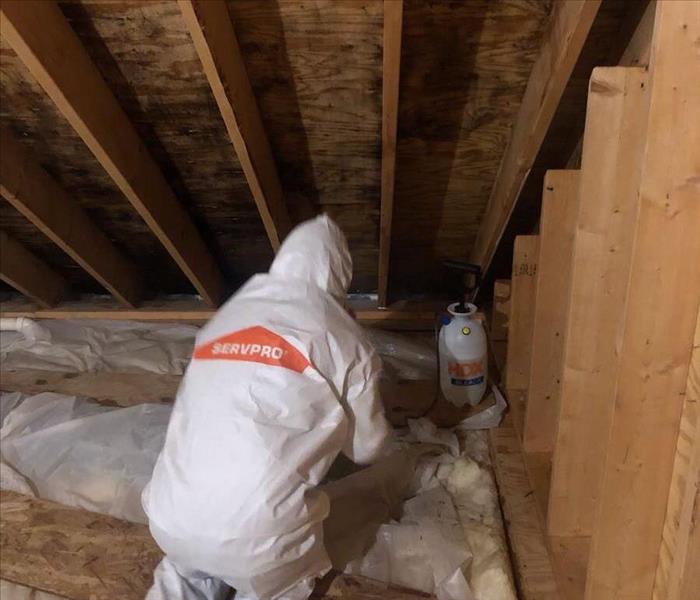 If you suspect mold in your home, reach out to us for professional advice and testing services.
If you suspect mold in your home, reach out to us for professional advice and testing services.
Mold can be a homeowner's worst nightmare, causing structural damage and diminishing property value. While visible mold growth is easy to spot, it’s the hidden mold that often requires professional testing. At SERVPRO of The Seacoast, we provide expert mold testing services to ensure your home is free of any underlying mold issues. In this blog, we’ll cover when you should conduct mold testing, how to do it properly, and what you can expect from the process.
When Should You Conduct Mold Testing?
Mold testing isn’t always necessary in every home. However, there are specific situations when it becomes crucial:
- After water damage: Whether from a flood, burst pipe, or leaky roof, water damage creates the perfect conditions for mold to thrive. Testing ensures no hidden mold remains.
- Unexplained odors: A musty smell can indicate hidden mold behind walls, under carpets, or in the attic.
- Real estate transactions: Mold testing is often part of a home inspection to provide buyers with peace of mind.
- Visible signs of mold: If you notice any visible mold growth, it’s a good idea to test for its extent and determine the specific type of mold present.
According to the Environmental Protection Agency (EPA), testing for mold is advisable when a home has been subjected to extensive water damage or flooding for more than 48 hours. For more information on when to test for mold, you can check out their guidelines here.
How to Test for Mold
Professional mold testing involves a multi-step process to determine the presence and type of mold. Here's how it typically works:
- Visual inspection: Professionals begin by visually inspecting your home for signs of moisture, water damage, and visible mold growth.
- Surface sampling: This method involves taking samples from visible mold growth, often through swabbing or tape lifting, and sending them to a lab for analysis.
- Air sampling: Air tests are conducted to determine mold spore levels in the home. This can be especially useful if mold isn’t visible but there are strong indications of its presence.
- Moisture mapping: Using specialized tools, professionals identify areas of high moisture, where mold is most likely to develop.
While DIY mold test kits are available, they don’t offer the same accuracy or reliability as professional testing. For precise results, always rely on certified experts to handle the process.
Why Choose Professional Mold Testing?
Professional mold testing ensures a thorough analysis of your home, including areas where mold may not be immediately visible. By hiring experts, you benefit from detailed reports, accurate results, and peace of mind knowing your home is mold-free.
At SERVPRO of The Seacoast, we use industry-leading tools and techniques to conduct comprehensive mold testing and remediation. If you suspect mold in your home, reach out to us for professional advice and testing services.
Understanding Water Damage in Condos and Apartments: Responsibilities and Solutions
10/16/2024 (Permalink)
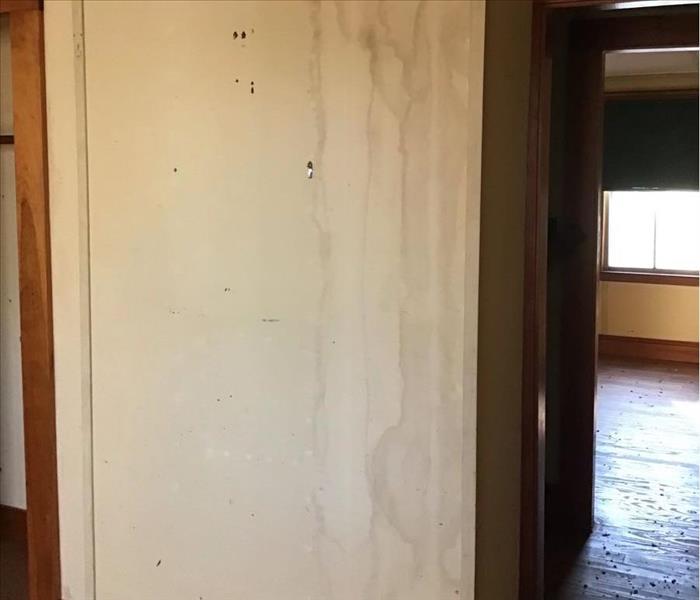 Water damage can cause significant structural and financial burdens if not addressed promptly.
Water damage can cause significant structural and financial burdens if not addressed promptly.
Water damage is one of the most common and costly issues that condo and apartment owners face in Dover, New Hampshire. According to the Insurance Information Institute, water damage accounts for about 20 percent of all insurance claims filed by homeowners, including those in multi-family residences like condos and apartments. Whether it's due to a burst pipe, a leaking roof, or a malfunctioning appliance, water damage can cause significant structural issues and financial burdens if not addressed promptly.
The Scope of Responsibility
Understanding Who Is Responsible
In a condo or apartment setting, determining responsibility for water damage can be complex. The answer often depends on the source of the damage and the specific language in the lease agreement or condo bylaws. Generally, the responsibility is divided between the tenant, the property owner, and the condo association.
- Tenants: Typically responsible for any damage caused by their personal property or negligence, such as an overflowing bathtub or a leaking appliance they own.
- Property Owners: Usually responsible for maintaining the integrity of the structure, including plumbing systems, roofs, and common areas. They may also be liable if the damage results from failing to address known issues.
- Condo Associations: Responsible for maintaining common areas and the building's exterior. They may also be liable for damages if they fail to maintain shared plumbing systems or if the damage originates from a common area.
Steps to Take When Water Damage Occurs
If water damage occurs in your condo or apartment, it's crucial to take immediate action to mitigate further damage and to determine who is responsible. Here’s a step-by-step guide:
- Document the Damage: Take photos and videos of the affected area to document the extent of the damage. This will be important for any insurance claims or disputes.
- Notify the Necessary Parties: Contact your landlord, property manager, or condo association immediately to report the damage. They may need to notify their insurance company, or you may need to file a claim with yours.
- Mitigate Further Damage: Take steps to prevent further damage, such as shutting off the water source, if possible, and removing any personal property that could be damaged.
- Consult the Bylaws or Lease Agreement: Review the lease agreement or condo bylaws to understand the responsibilities and procedures for repairs. This document will outline who is responsible for what and the steps to follow.
Preventative Measures
Protecting Your Investment
Preventing water damage is the best way to avoid the headaches and costs associated with repairs. Regular maintenance and proactive measures can go a long way in safeguarding your property.
- Regular Inspections: Schedule regular inspections of your plumbing, appliances, and roofing to catch potential issues before they become major problems.
- Install Water Detection Devices: Water detection alarms can alert you to leaks or excess moisture before significant damage occurs. These devices are particularly useful in areas prone to leaks, such as under sinks or near washing machines.
- Know Your Insurance Coverage: Ensure that your insurance policy covers water damage and that you understand the terms. Consider additional coverage for specific scenarios that may not be included in a standard policy.
Water damage in condos and apartments is a serious issue that requires prompt attention and a clear understanding of responsibilities. By knowing what to do when damage occurs and taking preventative measures, you can protect your investment and avoid costly repairs in the future.
For more information on how to handle water damage, or if you need professional assistance, contact SERVPRO® today. We're here to help you navigate through the complexities of water damage restoration and get your property back to its pre-damage condition.
Storm-Proofing Your Landscaping: Trees, Shrubs, and Garden Tips
9/11/2024 (Permalink)
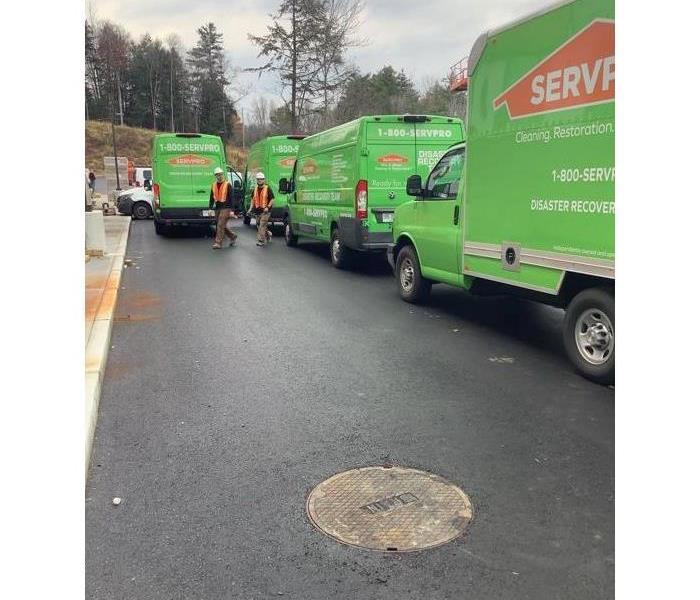 At SERVPRO, we are committed to helping you protect your property and maintain the health of your landscaping.
At SERVPRO, we are committed to helping you protect your property and maintain the health of your landscaping.
As a homeowner, protecting your property from storm damage involves more than just securing your house. Your landscaping, including trees, shrubs, and gardens, plays a crucial role in minimizing damage and enhancing the overall resilience of your property. At SERVPRO®, we understand the importance of storm-proofing every aspect of your home. Here are some essential tips to help you storm-proof your landscaping effectively.
Selecting the Right Trees and Shrubs
Choosing the right trees and shrubs for your yard is the first step in creating a storm-resistant landscape. Opt for native species, as they are better adapted to the local climate and soil conditions. Native trees such as oaks, maples, and pines are generally more resilient to high winds and heavy rains. Additionally, consider planting smaller, sturdy trees that are less likely to topple during a storm. Avoid fast-growing species, as they tend to have weaker root systems and are more susceptible to damage.
Proper Planting Techniques
Proper planting techniques are crucial for the longevity and stability of your trees and shrubs. Ensure that trees are planted at the correct depth, with the root flare visible above the soil line. Mulching around the base of trees helps retain moisture and prevent soil erosion. For shrubs, plant them with adequate spacing to allow for healthy root growth and air circulation. This reduces the risk of disease and enhances their ability to withstand strong winds.
Regular Maintenance and Pruning
Regular maintenance and pruning are vital for storm-proofing your landscaping. Remove any dead or diseased branches, as they can become hazardous projectiles during a storm. Thinning the canopy of trees allows wind to pass through more easily, reducing the likelihood of uprooting. For shrubs, trim back overgrown branches to prevent them from becoming entangled or broken during high winds. Consistent maintenance not only improves the health of your plants but also enhances their resilience.
Windbreaks and Barriers
Incorporating windbreaks and barriers into your landscaping design can provide additional protection against storm damage. Planting rows of dense shrubs or trees along the windward side of your property can help reduce wind speed and deflect strong gusts. Fences, walls, and hedges also serve as effective barriers, shielding your garden and home from debris carried by the wind. Consider using materials that are resistant to storm damage, such as pressure-treated wood or metal, for added durability.
Protecting Your Garden
Gardens are particularly vulnerable during storms, but there are steps you can take to safeguard them. Stake tall plants and vegetables to provide additional support and prevent them from being uprooted. Using mulch in garden beds helps retain soil moisture and reduces erosion caused by heavy rains. Additionally, consider installing raised beds to improve drainage and protect delicate plants from waterlogging. After a storm, inspect your garden for damage and promptly remove any debris to prevent further harm.
By following these storm-proofing tips, you can create a resilient and beautiful landscape that withstands the challenges of severe weather. At SERVPRO, we are committed to helping you protect your property and maintain the health of your landscaping. For more expert advice and assistance with storm damage restoration, contact us today. Your safety and peace of mind are our top priorities.
The dangers of DIY fire restoration
8/14/2024 (Permalink)
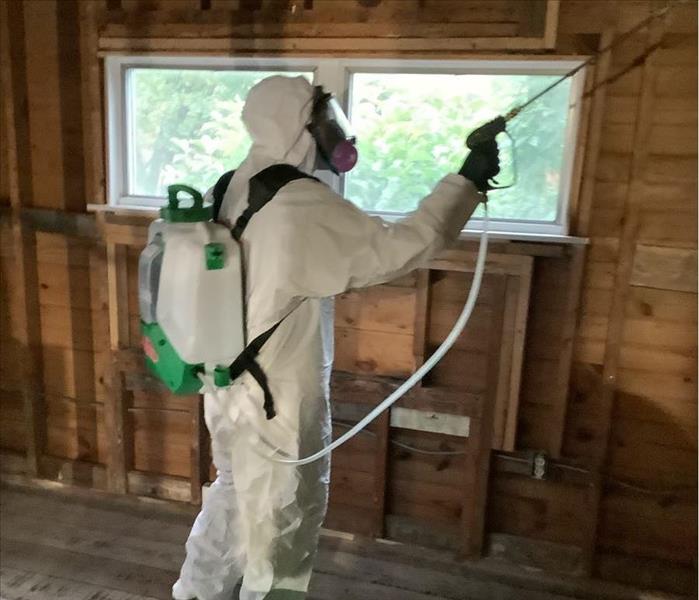 Trust the professionals at SERVPRO to handle your fire restoration needs.
Trust the professionals at SERVPRO to handle your fire restoration needs.
Experiencing a fire in your home or business is a traumatic event. The aftermath often leaves property owners eager to jump into the restoration process and reclaim their space. While the DIY spirit is commendable, attempting fire restoration without professional help can be fraught with dangers and complications. At SERVPRO®, we understand the urgency to restore your property, but we also want to emphasize the risks associated with DIY fire restoration.
Hidden Structural Damage
One of the most significant dangers of DIY fire restoration is hidden structural damage. Fire can weaken the structural integrity of a building in ways that aren't immediately visible. Without a thorough inspection by a trained professional, you might overlook critical damage to the foundation, walls, and roof. This oversight can lead to dangerous living conditions and costly repairs down the line.
Ineffective Smoke and Soot Removal
Smoke and soot are pervasive after a fire and can penetrate deep into walls, furniture, and other surfaces. DIY methods often fail to fully remove smoke and soot, leaving behind residues that can cause long-term damage and unpleasant odors. Professional fire restoration services use specialized equipment and techniques to thoroughly clean and deodorize your property, ensuring that all traces of smoke and soot are eliminated.
Improper Use of Cleaning Agents
Fire restoration involves the use of various cleaning agents to remove soot, smoke, and other residues. Using the wrong products or incorrect methods can result in further damage to your belongings and surfaces. Professionals at SERVPRO are trained in selecting and applying the appropriate cleaning agents for different materials and situations, preventing additional harm to your property.
Electrical Hazards
Fires can cause significant damage to a building’s electrical system. Exposed wires, damaged circuits, and compromised outlets present serious safety risks. Attempting to handle electrical repairs without proper training and equipment can result in electrocution or even spark another fire. Fire restoration professionals work closely with licensed electricians to safely address any electrical issues during the restoration process.
Health Risks
Although we’re focusing on property damage, it's worth noting that attempting to clean up fire damage yourself can expose you to harmful chemicals and residues left behind by the fire. Professionals use protective gear and are trained to handle hazardous materials safely.
Inefficiency and Increased Costs
DIY fire restoration might seem like a cost-saving measure, but it often ends up being more expensive in the long run. Without the proper tools, knowledge, and experience, the restoration process can take significantly longer and may not be done correctly. This can lead to ongoing issues and the need for further repairs. Hiring professionals from the outset ensures that the job is done efficiently and correctly, saving you time and money.
Why Choose SERVPRO?
At SERVPRO, we specialize in fire restoration and have the expertise, equipment, and experience to handle all aspects of the process. From initial inspection and damage assessment to comprehensive cleaning and repairs, our team is dedicated to restoring your property to its pre-fire condition quickly and safely.
While DIY fire restoration might seem like an appealing option, the potential dangers and complications make it a risky endeavor. Trust the professionals at SERVPRO to handle your fire restoration needs, ensuring a safe and thorough recovery for your property. If you’ve experienced a fire, don’t hesitate to contact us for expert assistance.
Emergency Mold Remediation: What to Do in a Crisis
7/17/2024 (Permalink)
Mold is a persistent problem that can quickly escalate into a crisis if not addressed promptly and effectively. When faced with mold growth in your home or business, it's crucial to take immediate action to mitigate the damage and protect your property. At SERVPRO®, we understand the urgency of mold emergencies, which is why we're here to provide you with expert guidance on what to do when facing a mold crisis.
- Assess the Situation: The first step in addressing a mold emergency is to assess the extent of the problem. Look for visible signs of mold growth, such as discoloration or musty odors, and determine the affected areas of your property.
- Safety First: Before attempting any mold remediation efforts, prioritize safety. Wear protective gear, including gloves, goggles, and a mask, to prevent exposure to mold spores. If the mold growth is extensive or in hard-to-reach areas, consider contacting a professional mold remediation company like SERVPRO® for assistance.
- Containment: To prevent the spread of mold spores to unaffected areas of your property, it's essential to contain the contaminated area. Seal off the affected space using plastic sheeting and duct tape, and use fans to create negative air pressure to keep mold spores from spreading.
- Moisture Control: Mold thrives in moist environments, so it's crucial to address any underlying moisture issues to prevent mold from returning. Fix leaks, repair water damage, and ensure proper ventilation in areas prone to humidity, such as bathrooms and basements.
- Cleaning and Disinfection: Once the affected area is contained and moisture issues are resolved, it's time to clean and disinfect the mold-infested surfaces. Use a mixture of detergent and water to scrub away visible mold growth, then apply a solution of water and bleach or a commercial mold remover to kill any remaining mold spores.
- Drying: After cleaning, thoroughly dry the affected area using fans, dehumidifiers, or natural ventilation. Proper drying is essential to prevent mold from regrowing and causing further damage to your property.
- Monitor and Prevent: Keep a close eye on the treated area for any signs of mold regrowth, and take proactive measures to prevent future mold problems. Regularly inspect your property for leaks, maintain proper ventilation, and address any water damage promptly to keep mold at bay.
Facing a mold emergency can be daunting, but with the right knowledge and prompt action, you can effectively mitigate the damage and restore your property to its preloss condition. If you're dealing with a mold crisis and need professional assistance, don't hesitate to contact SERVPRO® for expert mold remediation services. We're here to help you navigate through any mold-related challenges and ensure a safe and healthy environment for your home or business.
How to Be Proactive with Commercial Water Damage Prevention
6/12/2024 (Permalink)
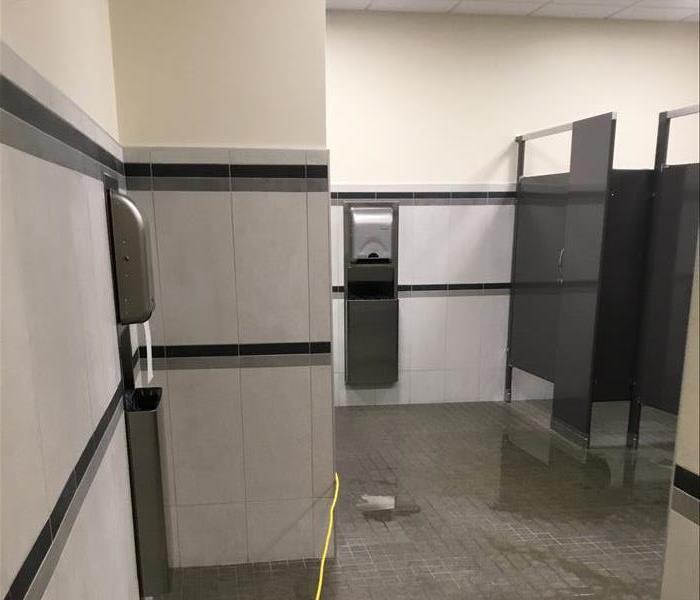 Being proactive with commercial water damage prevention is essential for protecting your property, assets, and reputation.
Being proactive with commercial water damage prevention is essential for protecting your property, assets, and reputation.
Water damage can cause serious damage to commercial properties, leading to expensive repairs, operational interruptions, and potential hazards. As a responsible property owner or manager, taking proactive steps to prevent water damage is crucial for maintaining a safe and functional environment for employees, customers, and tenants. Here are some practical tips to help you stay ahead of potential water damage issues and protect your commercial property.
Regular Inspections and Maintenance
One of the most effective ways to prevent water damage is through regular inspections and maintenance of your commercial property. Inspect all areas prone to water leaks, such as roofs, plumbing systems, and HVAC units, on a scheduled basis. Look for signs of damage, deterioration, or wear and tear, such as loose or missing shingles, leaking pipes, and clogged gutters. Address any issues quickly to prevent them from escalating into more severe problems.
Upgrade Plumbing Fixtures and Appliances
Outdated or malfunctioning plumbing fixtures and appliances can be a common source of water damage in commercial properties. Consider upgrading to modern, water-efficient fixtures and appliances that are less prone to leaks and failures. Install automatic shut-off valves and leak detection devices to alert you to potential leaks before they cause extensive damage.
Proper Drainage and Landscaping
Improper drainage and landscaping can contribute to water leaks and flooding around your commercial property. Ensure that gutters and downspouts are clear of debris and direct water away from the building's foundation. Grade the landscaping to slope away from the structure to prevent water from pooling around the foundation. Install French drains or other drainage systems as needed to redirect water away from vulnerable areas.
Emergency Preparedness Plan
Developing an emergency preparedness plan is crucial for minimizing the impact of water damage on your commercial property. One effective way to streamline this process is by implementing SERVPRO's Emergency Ready Program (ERP). With ERP, you can identify potential water damage risks and develop customized protocols for responding to emergencies, such as burst pipes, roof leaks, or flooding. Our experienced professionals will work with you to assess your property's vulnerabilities and create a comprehensive plan tailored to your specific needs. By training staff on how to recognize and respond to water damage incidents promptly, you can mitigate the risk of extensive damage and business interruptions. Additionally, keeping essential contact information for emergency services, restoration companies like our SERVPRO® team, and utility providers readily available ensures a quick and coordinated response in the event of a water damage emergency.
Invest in Professional Water Damage Restoration Services
Despite your best efforts at prevention, water damage incidents can still occur unexpectedly. Investing in professional water damage restoration services can help mitigate the damage and restore your commercial property to its preloss condition quickly and efficiently. SERVPRO technicians are trained and equipped to handle all types of water damage emergencies, from small leaks to major flooding events. By partnering with SERVPRO, you can have peace of mind knowing that your property is in expert hands.
Being proactive with commercial water damage prevention is essential for protecting your property, assets, and reputation. By implementing regular inspections, upgrading plumbing fixtures, ensuring proper drainage, developing an emergency preparedness plan, and partnering with a reputable restoration company like SERVPRO®, you can minimize the risk of water damage and protect your commercial property for years to come. Take the necessary steps today to prevent water damage tomorrow.
What You Need to Know About the Saffir-Simpson Hurricane Wind Scale
5/15/2024 (Permalink)
As hurricane season approaches, it's essential to understand the Saffir-Simpson Hurricane Wind Scale, a widely recognized tool for assessing the potential impact of hurricanes. Developed by engineer Herbert Saffir and meteorologist Robert Simpson, this scale categorizes hurricanes based on their sustained wind speeds and provides valuable insights into the potential damage they can cause. Here's a breakdown of the Saffir-Simpson scale and what each category means:
Category 1 (74-95 mph)
Hurricanes in this category are considered relatively weak but can still cause damage. Expect minimal structural damage, primarily to unanchored mobile homes, trees, and shrubbery. Power outages may occur, and loose outdoor items could become projectiles in the wind.
Category 2 (96-110 mph)
Category 2 hurricanes pose a moderate threat, with the potential for extensive damage. Well-constructed homes may sustain roof and siding damage, and older mobile homes could be destroyed. Power outages may last for several days, and fallen trees can block roads.
Category 3 (111-129 mph)
Considered a major hurricane, Category 3 storms can cause significant damage. Structural damage to homes is likely, with roofs and exterior walls at risk of failure. Power outages may be prolonged, and evacuation orders are common for coastal areas due to the threat of storm surge.
Category 4 (130-156 mph)
Category 4 hurricanes are extremely dangerous and capable of causing catastrophic damage. Well-built homes may suffer severe damage or even collapse, and most trees will be snapped or uprooted. Power outages can last for weeks, and coastal flooding from storm surge is a significant concern.
Category 5 (157 mph or higher)
The most intense hurricanes, Category 5 storms, can cause widespread destruction. High-rise buildings may sustain significant damage, and most trees will be snapped or uprooted. Extensive power outages can last for weeks or months, and coastal areas may experience devastating storm surge.
Understanding the Saffir-Simpson Hurricane Wind Scale can help you prepare for hurricanes and make informed decisions about evacuation and safety measures. Stay informed about approaching storms by monitoring weather updates from reliable sources and following guidance from local authorities. By being proactive and prepared, you can mitigate the potential impact of hurricanes and keep yourself and your loved ones safe during severe weather events.
Safeguarding Spaces: A Guide to Home Ventilation for Fire Hazard Reduction
4/22/2024 (Permalink)
Creating a safe and secure living environment involves more than just aesthetic considerations; it requires a proactive approach to minimizing potential fire hazards. Adequate home ventilation plays a pivotal role in achieving this goal. In this blog, we'll explore practical strategies for properly ventilating your home to reduce fire hazards.
Install Exhaust Fans
Incorporate exhaust fans in areas prone to heat and moisture, such as kitchens and bathrooms. These fans efficiently remove excess heat, preventing the buildup of combustible elements and reducing the risk of fire hazards.
Optimize natural ventilation by strategically placing windows to encourage cross-ventilation. Allowing fresh air to circulate throughout your home helps disperse potential combustible elements, minimizing fire risks.
Regular HVAC Maintenance
Keep your heating, ventilation, and air conditioning (HVAC) systems in optimal condition through regular maintenance. Clean filters, clear vents, and inspect ducts to ensure these systems operate efficiently, reducing the likelihood of overheating and fire hazards.
Implement proper attic ventilation to prevent the buildup of heat in this often-neglected space. Consider installing ridge vents, gable vents, or soffit vents to promote airflow and reduce the risk of potential fire hazards.
Use Fire-Resistant Building Materials
Choose construction materials with fire-resistant properties, especially for exterior components. Fire-resistant siding, roofing, and vents can provide an added layer of protection against potential external fire hazards.
Regularly inspect and clear vents, chimneys, and flues of any debris, leaves, or other obstructions. Blocked vents can hinder proper ventilation and increase the risk of fire hazards, particularly in heating systems.
Outdoor Appliances Safety
Keep outdoor appliances, such as grills and fire pits, at a safe distance from your home and other flammable structures. Adequate spacing reduces the risk of radiant heat and sparks reaching vulnerable areas.
Ensure that appliances generating heat, like stoves and ovens, are properly ventilated. Range hoods and exhaust fans can help eliminate heat and gases, minimizing the risk of internal fire hazards.
Mindful Landscaping
Be mindful of landscaping around your home. Create a defensible space by clearing away vegetation and leaves, reducing the risk of external fires spreading and minimizing potential fire hazards.
Foster a culture of fire safety within your household. Educate family members about the importance of proper ventilation and the role it plays in reducing fire hazards. Awareness contributes to a collective effort in maintaining a safe living environment.
Proper home ventilation is a practical and effective means of reducing fire hazards. By implementing strategies such as exhaust fans, strategic window placement, and fire-resistant materials, homeowners can contribute to a safer living space. A proactive approach to home ventilation ensures that your home remains a haven, minimizing the risk of fire hazards and providing peace of mind for you and your loved ones.
 Water damage can be overwhelming, leaving homeowners and business owners with tough decisions about what can be salvaged and what must be replaced.
Water damage can be overwhelming, leaving homeowners and business owners with tough decisions about what can be salvaged and what must be replaced.






 24/7 Emergency Service
24/7 Emergency Service



